
Review on 📷 NexiGo N950 4K Zoomable Webcam with 5X Digital Zoom, Sony Sensor, and Dual Stereo Microphone - Low Light Correction for Zoom, Skype, MS Teams - Laptop, MAC, PC, Desktop by George Mack

Great camera I came back in the end
For my setup I was looking for a webcam with a narrow field of view. My shots are mostly taken from the middle of the torso and up when I'm standing or sitting. Many webcams have a viewing angle of 70 to 90 degrees or more. I don't need people to see my entire room behind me during a video conference. Sometimes I have a screen behind my back and don't want the camera to peek over the edges. This is a person in front of the camera, not a boardroom that needs to receive an audience. I also don't need a $500+ digital SLR or video camera for what I do. I've been looking for months for an adjustable field of view option in a basic webcam, and finally decent cameras with the ability to narrow the field of view using the zoom function are on the market. I'm not sure if this Nexigo N950 camera is what I was looking for. I also bought a Mokose UC70-6-12MM and compared the two cameras to get the view I wanted without having a wide view of things behind me. It should be a simple concept, but webcam manufacturers didn't seem to get it right until recently. The head-to-head comparison is for those looking for a similar setup to mine and not sure which camera is better. Both the Nexigo N950 and the Mokose are considered webcams, but not quite apple-to-apple. Nexigo has a field of view adjustable with the zoom from 20 to 90 degrees. Mokose has a FOV of 32 to 61 degrees. Once connected to USB, both were easily recognized by Windows 10 and other apps like Zoom. Both produce an image quality that far surpasses any built-in webcam. The main difference is that Nexigo uses automatic lighting and focus while Mokose uses manual. Neixgo requires you to manually enlarge the photo by pressing a button on the camera. It makes small zoom adjustments with each click, up to 30 clicks, then resets it to wide and starts again. The main disadvantage is that the original FOV setting at 90 degrees is too far for me. That's why I need a bigger picture. I would have to memorize how many clicks I have to make each time I turn it on. This is a major disadvantage for me. It doesn't remember the desired zoom level after I turn it off. Mokose manual. Once the field of view is set, it stays there. There is also a manual focus. This is fine with me because I don't move the camera or my sitting/standing position more than 6-12 inches in and out of the camera and the focus stays within that range with no issues. The Nexigo's automatic light control works well. I found myself a bit oversaturated in Zoom, but the picture was good in Windows Camera. Mokose has a manual adjustment of the lighting opening. I could set it up manually better than Nexigo automatically. The main difference I found between the two is that Mokos loves extra lighting. This focuses more on the studio where the ambient lighting is provided. Nexigo worked better with limited lighting. Mocose tend to give raccoon eyes without a well-lit room or additional facial lighting. Nexgio is friendlier to using ambient light. It also depends on the amount and type of lighting in your area, ymmv. Both are mounted on a tripod, that's how I use them. The Nexigo has a built in stand and monitor clip with up and down adjustment (no sideways adjustment), the Mokose does not need to be mounted on a flat surface or tripod. Nexigo has a microphone, Mokoe doesn't. I can't say anything about the quality of the microphone because I use a table microphone. While the Nexigo can be scaled down to a narrower 20-degree field of view, the lens' native 90-degree field of view allows me to narrow the angle of view down to my personal preference. Zoom isn't the only way to adjust the field of view of lenses. Each press of the zoom button on the Nexigo reduces the FOV but also zooms in on the subject. This is fine up to a point, but then the object may be magnified too much. Resetting the camera might help, but then the field of view behind me becomes larger than the target again. Mokose starts with a smaller field of view with less zoom and angle adjustment. This allows me to get a correct FOV with no visible nose hair. After comparing both and making the best possible settings, I send the Nexigo back. Mokose just gave me an excellent image, better overall angle adjustment and held the zoom. More of a studio camera and suits my setup well. This is not a travel camera. This is a set and do not move the camera around it. If I needed something that I can easily pack, carry, and just sit on my laptop monitor that gives me zoom capability and a good picture, Nexigo would be for me. But for my needs for a camera with a narrow field of view to only shoot the middle of the torso and shoot up that I could adjust and exit the setting, the Mokose is perfect.
- Availability
- I have no particular complaints about it, everything is fine
New products
Comments (0)
Top products in 💻 Computer Audio & Video Accessories

Smartphone Samsung Galaxy A50 4/64 GB, 2 SIM, black

82 Review
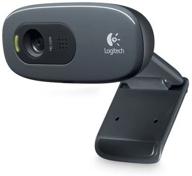
🎥 Logitech C270 Webcam: Crystal Clear Video and Superior Quality

183 Review
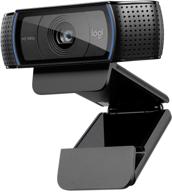
💻 Get Amazing Video Quality with Logitech HD Pro Webcam C920 (Discontinued Edition)

83 Review
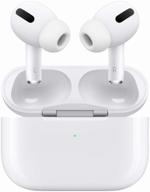
Apple AirPods Pro MagSafe RU Wireless Headphones, White

159 Review
Another interesting products

Sony 8cm DVD-R Double Sided Hangtab 3-Pack 3DMR60DSR1HC

11 Review
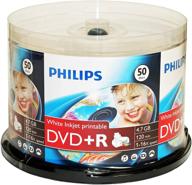
High-Quality Philips 16X DVD+R Media 50 Pack 📀 - White Inkjet Printable - Versatile Cake Box Packaging (DR4I6B50F/17)

10 Review
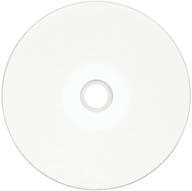
Verbatim 4.7GB DataLifePlus DVD-R 50-Disc Spindle: White Inkjet Printable with Hub Printable - 16x Recordable Disc (95079)

10 Review
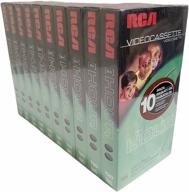
🎥 RCA Hi-Fi Stereo Videotape (10-Pack) - Limited Stock by Manufacturer | Improved SEO

10 Review

